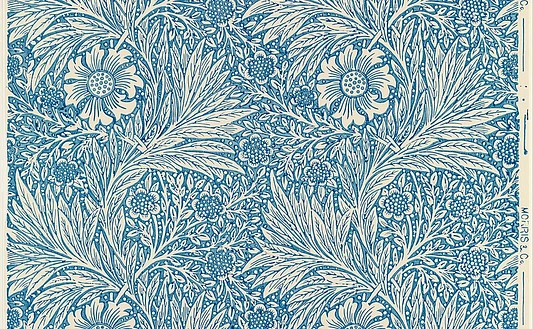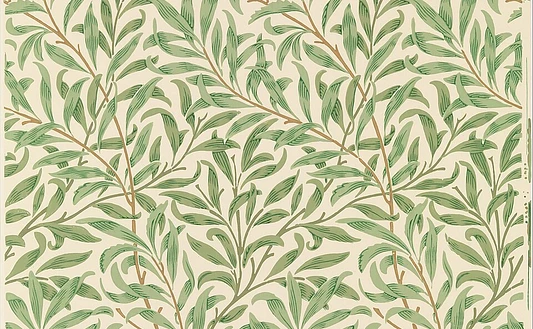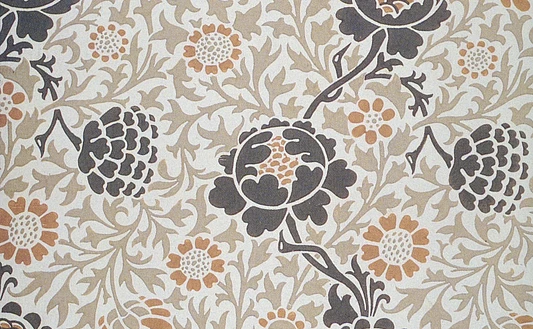William Morris: Visionary Designer and the Timeless Beauty of Wallpaper
William Morris (1834–1896) was more than a designer—he was a revolutionary force in 19th-century British art and design. A poet, novelist, textile designer, and social activist, Morris is perhaps best remembered for his profound influence on interior design, especially through the intricate and nature-inspired wallpaper patterns that defined the Arts and Crafts movement. His belief in the unity of art and life helped reshape Victorian taste and laid the groundwork for modern design principles.
A Life Devoted to Beauty and Craft
Born into a wealthy family in Walthamstow, England, Morris studied at Oxford, where he met future collaborators like Edward Burne-Jones. Influenced by medieval art and literature, Morris grew disillusioned with industrialization and mass production, which he felt degraded both art and labor. In 1861, he co-founded the design firm Morris, Marshall, Faulkner & Co., later known simply as Morris & Co. The company produced a wide range of decorative arts, including furniture, textiles, stained glass, and—most famously—wallpaper.
The Philosophy Behind the Patterns
Morris’s wallpaper designs were not just about decoration—they were expressions of his deep philosophy. He believed that art should be accessible, useful, and rooted in craftsmanship. Inspired by nature, medieval design, and historical techniques, he aimed to revive the lost connection between the artist and the artisan. Morris insisted that everyday items—walls, curtains, books—should be beautiful and meaningful.
His designs rejected the ornate excesses of Victorian interiors in favor of organic forms, harmonious repetition, and hand-crafted detail. Each wallpaper pattern was a small act of rebellion against the dehumanizing forces of industrial production.
Iconic Designs That Endure
William Morris’s wallpaper patterns are timeless—instantly recognizable for their flowing lines, botanical motifs, and balance of complexity and calm. Many of his most celebrated designs remain in production today, revered for their natural elegance and artisanal quality. Among them:
-
"Jasmine": A delicate and airy pattern featuring intertwining jasmine vines and tiny blossoms. This design showcases Morris’s ability to create movement and grace using fine, detailed linework.
-
"Marigold": One of Morris’s simpler yet striking designs, Marigold features stylized floral and leaf forms arranged in a flowing, all-over pattern. Its organic rhythm and subdued palette make it versatile and modern, even today.
-
"Daisy": Inspired by traditional English meadow flowers, Daisy was one of Morris’s earliest wallpaper designs (1864). Its repeating motif of daisy blooms against a subtle backdrop exemplifies his love of medieval simplicity and garden motifs.
-
"Grafton": A richly patterned design with a sense of structure and symmetry, Grafton blends foliage and floral forms in a repeating pattern that feels both classic and contemporary. It reflects Morris’s deep interest in medieval and Islamic decorative arts.
-
"Wild Tulip": A lush, naturalistic design featuring the sinuous curves of tulip stems and leaves. This wallpaper exemplifies Morris’s attention to the natural world and his skill in translating it into stylized, harmonious compositions.
-
"Willow Bough" (1887): Perhaps the most iconic of Morris’s designs, Willow Bough depicts the gentle, arching movement of willow branches. With its serene flow and understated beauty, it remains a favorite in both period homes and modern interiors.
Each of these wallpapers captures Morris’s central belief: that art should be rooted in nature and craftsmanship, bringing beauty into the everyday. Though created over a century ago, these designs still resonate with contemporary tastes, proving the lasting power of his vision.
Legacy and Modern Appeal
William Morris died in 1896, but his vision lives on. His designs have never gone out of style, continuously reinterpreted for modern interiors. His belief that “you should have nothing in your house that you do not know to be useful, or believe to be beautiful” remains a guiding principle for designers and homeowners alike.
Today, Morris's wallpapers are still in production, often by Morris & Co., a testament to their enduring charm and craftsmanship. In a world still grappling with the balance between industry and artistry, Morris's work reminds us of the beauty in nature, the value of handcraft, and the power of design to enrich daily life.





